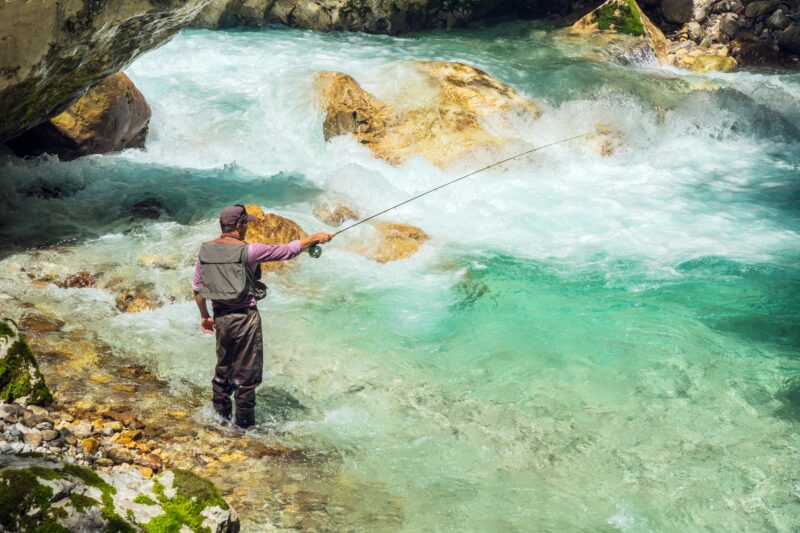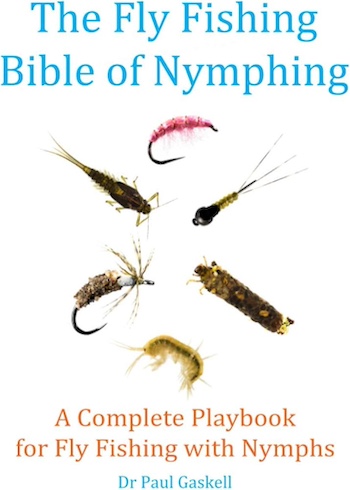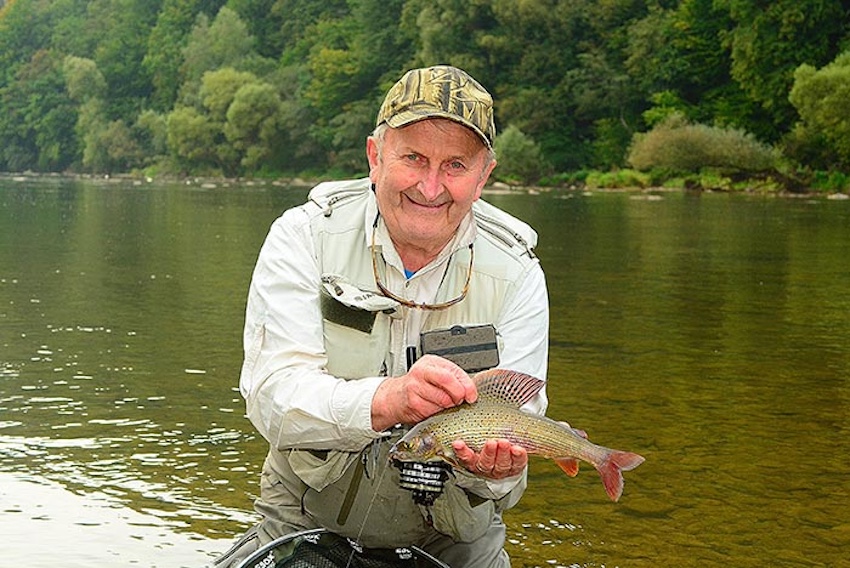
Wladyslaw “Vladi” Trzebunia blew everyone’s mind at the 1989 World Fly Fishing Championships.
Photos by Richard R. Twarog
Nymphing is the straightforward catch ‘Mo Betta’ winner

Skip Clement
By Henry Clement
Euro Nymphing is not new. It is simply the resurrection of a fly-fishing technique that has already gone through several cycles of discovery and discard.
In the past, nymphing featured long fly rods, short fly rods, and one hook-tied nymph to multiple hook-tied patterns. Of course, fishing nymphs in the surface film and then to benthic real estate.
Hey, Stop, you’re catching too many trout
It all began, unofficially, in ancient AD Rome, then skipping a few millennia, England/Scotland, but it was outlawed because it was too easy to be successful nymphing. Yes, you read that correctly. Only the snobby upper crust could come up with that.
Nymphing slowly reemerged in England, reportedly in the 1930s, gaining popularity before fading again. Then, it moved to the Americas, where nymphing had a short-lived popularity. It faded just as major fly line producers came out with lines to complement tight-line nymphing like Orvis did almost 40 years ago.
The Europeans rescue nymphing
By the late 1980s, sophisticated tight-line nymphing techniques developed in North America came back across the pond. The proficiencies of the new nymphing became an essential tournament ploy and employed by most nations competing in the World Fly Fishing Championships.
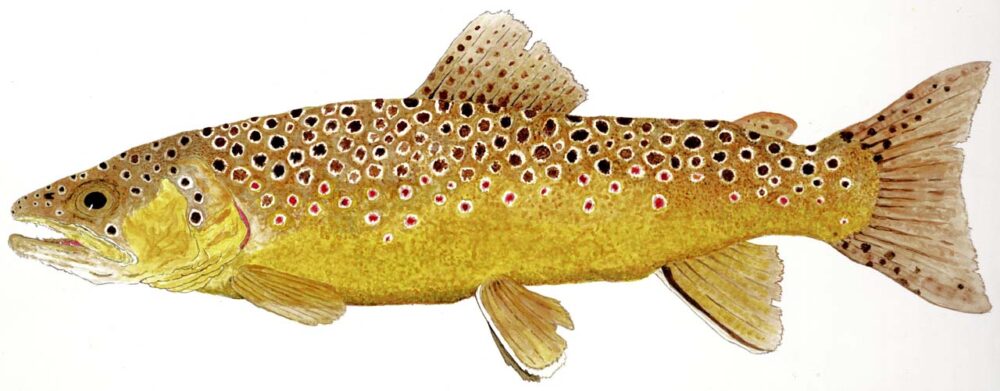
Remember where you are when at the festival; you are of the Yellow Breeches and the Letort, where this Salmo Trutta was caught and released – a commissioned work by Thom Glace.
Nymphing is now the best way to catch trout?
The answer is probably yes, as it took a new track to make nymphing a surefire way to fish out a pool.
In 1989, journalists and bystanders followed an unlikely Polish team member, Wladyslaw Trzebunia, at the World Fly Fishing Championship in Kuusamo, Finland. His distinct peasant demeanor, appearance, and weird-looking but magical fly fishing ‘casts’ captured them. He looked like a farmhand with a ragged appearance and perpetual smile. He was not a born-of-the-manner copy of the clubby fellows with leather-patched tweed jackets.
In 1989, journalists and bystanders followed an unlikely Polish team member, Wladyslaw Trzebunia, at the World Fly Fishing Championship in Kuusamo, Finland. His distinct peasant demeanor, appearance, and weird-looking but magical fly fishing ‘casts’ captured them. He looked like a farmhand with a ragged appearance and perpetual smile. He was not a born-of-the-manner copy of the clubby fellows with leather-patched tweed jackets.
He was, instead, their master with a fly rod in hand
He deployed an unseen ” castless ” fly delivery method that attracted trout like no other method and annihilated all his world competitors catching trout.
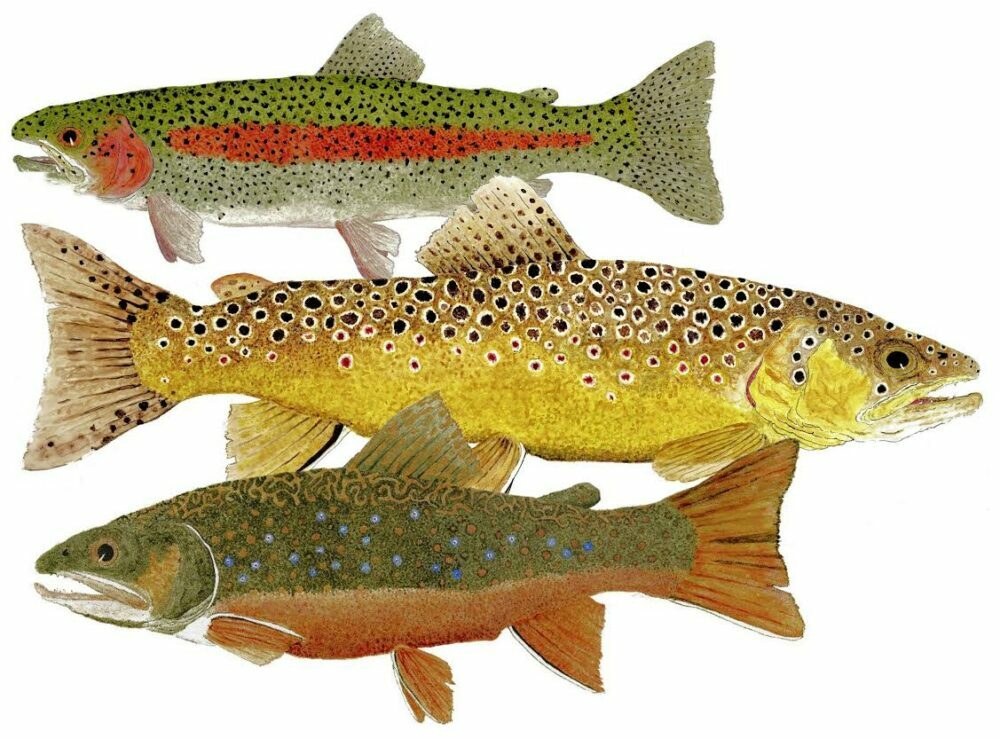
Illustration by Thom Glace – rainbow trout, brown trout, and brook trout. Used with permission.
The scoreboard tells the tale
Vladi landed a staggering total of 60 fish. A number was more than all of the 2nd, 3rd, and 4th places teams combined! He would even fish behind someone who came up without a bump and land two or three fish. It was ugly.
Since then, Vladi’s new nymphing technique has been imitated, appropriated, and renamed throughout Europe and the rest of the fly-fishing world. Over time, Vladi’s method has been reborn to new fathers with new nationalities.
Vladi’s nymphing procedure got its moniker trampled and started being referred to as European, Polish, Czech, French, and Spanish. In some instances, they all have additions that complicate the simplicity that Vladi’s father taught him in the 1930s. It was so complicated for some that abandonment was the best fix.
Vladi’s modus operandi
Keep the nymph fly off the bottom, move it with the current slightly faster, and keep the fly line out of the water by raising the rod tip. The angler and their rod should look like one side of a steeply pitched roof and the fly line, the other side of the steeply pitched roof. (See sketch)
Nymphing ‘bass ackwards’
Today, many books are written about nymphing techniques, ever-increasing instructive videos about nymphing anew, and several commentators in forums and social media representing themselves as nymphing Gurus shlepping more BS than the orange man.
Is there integrity to nymphing beyond Vladi?
According to Dr. Paul Kaskell, Tim Camissa, this author, and many others, not really. And for a bit of heresy, Kaskell says that the Japanese style of fly fishing, tenkara, has great nymphing merit.
Getting to the heart of successfully nymphing is never letting your fly line near the water. And good nymphing technique happens right before you – not 50-feet away. Casting, as it is commonly known, never plays a part in the best practice of Vladi’s nymphing style. Keeping it simple- stupid is best practice, no matter the circumstance.
Can you catch trout with your fly line in the water and cast it traditionally?
Yes, of course, but why would you want to fly a less productive way? Why would you tie a big streamer on a big, heavy hook? You can do much better with a tube-tied fly and a more manageable hook size. A tube fly does not need a big hook to match the size of the fly. Thus making an eat a much more likely outcome.
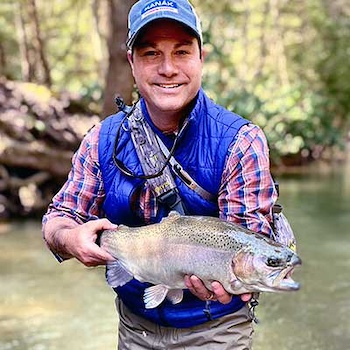
Tim Cammisa
Finding Dr. Paul
Tim Cammissa, a credible angler from my home waters of Pennsylvania, introduced a practical purveyor of trout nymphing “the old fashioned ‘Vladi’ way.” The guy Tim discovered is Dr. Paul Kaskell, a Londoner Ph. D. with a penchant for fly fishing and the curiosity of a scientist.
Conclusion
To make sense of it all, I encourage you to click on the video links that explain nymphing—a picture is worth a thousand words. The technique is so simple that you’ll jump for joy and be glad to rid yourself of the complicated BS that swims on social media, forums, and some videos authored by braggadocio types.
Here are the links:
NOTE: Tim is known for his depth of coverage, so be prepared to navigate his lengthy interview with Dr. Paul Gaskell.
Reminder: The last portion of Tim Camissa’s video interview with Dr. Paul Gaskell is separate and also enlightening. It is about nymph fly patterns. Some are brand-new looks that came about via Gaskell’s research.
Good article dealing with the history of ‘Nymphing’ – written by Al Simpson, October 2017.
Good article dealing with the history of ‘Nymphing’ – written by Al Simpson, October 2017.
The link is to the article about Wladyslaw Trzebunia and a video of him demonstrating his technique. Be sure to watch it . . .
Tim Camissa’s website . . .
Dr. Paul Gaskell’s website . . .
NOTE 2: Be sure to get Gaskell’s free book PDF.
NOTE 2: Be sure to get Gaskell’s free book PDF.


